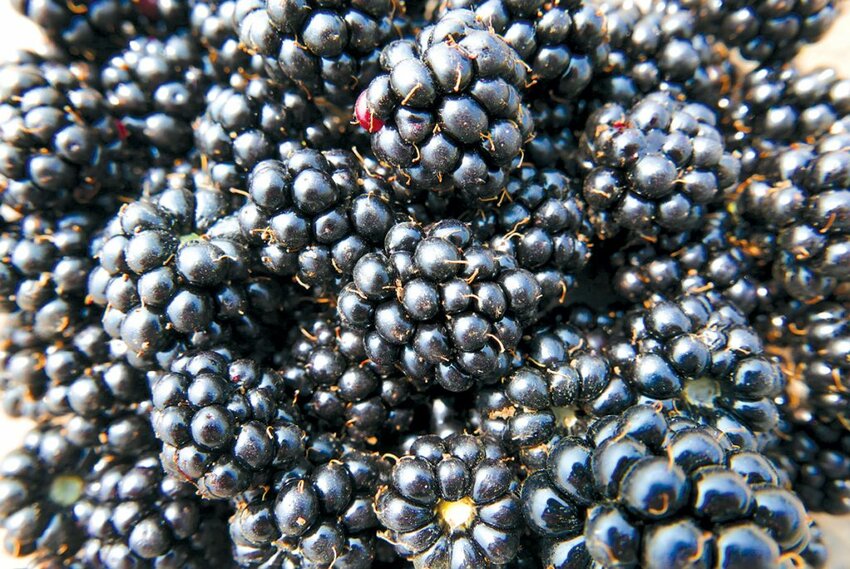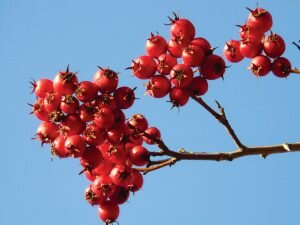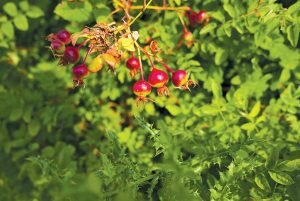
By Amy Gibson
As autumn approaches, plants begin to ready themselves for winter. For plants, the change in temperature causes sugars to migrate and convert into different forms with a variety of effects on the plant. Just as bears fatten up and slow down for winter, plants also prepare for a season of living on stored energy. They stop focusing their energy on the extremities and pull sugars into their roots and trunks.
We can take up these habits ourselves – storing up memories of light and growth, and preserving the bounty of fall to keep us healthy and full all winter. Lucky for us, preparing for winter is not a matter of life and death; don’t feel pressured by changing seasons. For me, this means not harvesting more than I can process and giving myself grace if I miss out on harvesting something wild. I will have more years to forage and more plants to learn.
A great book for plant identification is “Plants of the Pacific Northwest Coast,” by Michael Moore, which will help with identifying the following plants. As always, avoid sprayed plants, toxic runoff and depleted areas.
Berries
Late-season and high-elevation berries are abundant in autumn. Depending on the year, one can find huckleberries, blueberries, blackberries and many varieties of currants late into October. These berries are delicious fresh, and preserve well in many forms, including jellies, shrubs (a drinking vinegar), frozen or dried in a dehydrator.

Dandelion
During the spring and summer, fresh dandelion leaves and flowers are bitter edibles. In the fall, the flowers and leaves wither, leaving a nutrient-hoarding, carrot-like taproot. Harvest the root by gently loosening soil around the plant, digging deep down to get out as much root as possible. After pulling the root, scrub it clean. Dandelion root can be sliced and added to stir-fries or cut into pieces and either roasted or dehydrated to use as tea later.
Dandelion root can also be tinctured or soaked in vinegar to preserve its medicinal and nutritional constituents.
It’s a general tonic, meaning it can be used regularly to build a healthy body. It provides us with potassium, helps to cool and detoxify the liver, and is filled with a complex carbohydrate called inulin, which is a source of dietary fiber that can make some people extra gassy. It is a gentle diuretic, due in part to its mild bitterness and bile-building capabilities. While that may sound a little scary, bitters are actually good because they help create more digestive fluids, allowing us to absorb a fuller range of nutrients from our food. Bitterness and bile make us more efficient digesters!
Avoid dandelion if you have acute gall bladder or intestinal inflammation, or severe intestinal blockages.

Hawthorn berries
In the Pacific Northwest, we have a few varieties of hawthorn, varying in size from short shrubs to tall, vine-like trees. They all have serrated leaves and sharp, woody thorns. By fall, their jeweled fruits resemble small apples ranging from purple/black to bright red/orange. Their fruit, called haws, must be collected before first frost.
Hawthorn berries are high in pectin and therefore good for jam. Medicinally, hawthorn relieves both physical and emotional pressure on the heart. It is most effective when combined with spring flowers and leaves, so I have a master tincture to which I add each season’s harvest.
The berries provide a gentle, long-term aid to folks with hypertension. They soothe the pulse, and, according to Moore, hawthorn “…acts to strengthen weak functions or decrease excessive functions.” It relaxes blood vessels, smooths and tones cardiovascular muscles, and is gently astringent, helping irritated tissues throughout the body. Use dried hawthorn berries in teas or start a tincture of your own, following Moore’s instructions in “Medicinal Plants of the Pacific West.”

Rose hips
Rose hips are the fruit of the rose. They are tart and very high in vitamin C. Harvest them after the first real frost. They are painstaking to prepare – the tiny hairs inside each pod must be removed while gloved or they’ll make you itch. To get at that vitamin C, hips can be tinctured, soaked in vinegar or honey or dried and infused into tea.
Amy Gibson loves learning about all the edible and medicinal plants she can find in Whatcom County.